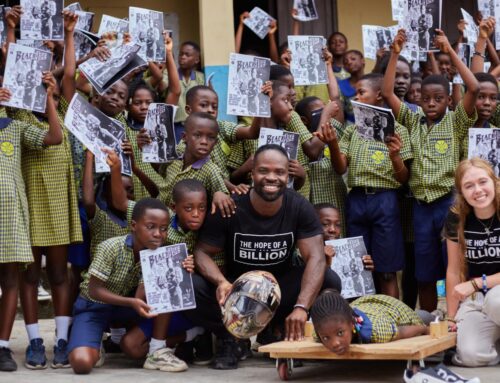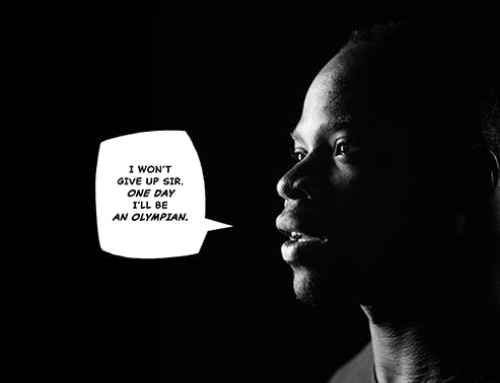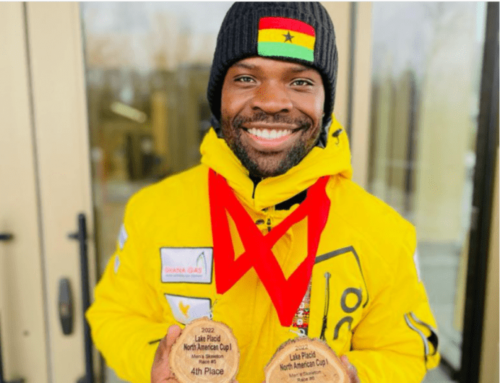My name is Akwasi Frimpong, and today, I’ll share what my typical training day for the Olympics looks like. On average, I train anywhere between 20 to 30 hours a week, and sometimes even more. My training isn’t only based on physical exercise, but nutrition, massages, and recovery play a pivotal role in the process. No matter how hard I train, I want what’s best for my body in the long run.
As I mentioned previously in my other blogs, training for Olympics doesn’t depend on a single exercise; it’s a bunch of different ones that need to be combined together. Everything mentioned below is just an example of one of my training days:
Training Day – Easy Level
8 AM: I wake up and go for a 6-mile run for about 45 minutes. If you’re new, take it slow and run at your own pace.
10 AM: Before starting my sprinter workout routine, here are some weight training exercises I engage in to to prepare my muscles for what’s coming next.
- Power Cleans (5 sets with 5 reps each)
- Barbell Squats (3 squats with 6 reps each)
- Bench Press (3 sets with 6 reps each)
- Plate and Bodyweight Complex Finishes (10 reps of chin-ups, 12 jump squats, 20 hanging knee raises, 8 reverses lunge, 10 dips, and 40ft sled drag) – 3 supersets
3 PM: After my training is done, it’s time to train on the tracks.
- Skips – 50m
- Backward skips – 50m
- Butt Kicks – 50m
- High Knees – 50m
- Backward runs – 50m
- Leg wings (back and front) – 10 reps
Training Day – Hard Level
5:30 AM: This is the day I push myself and go for a swim that lasts 80 minutes, and I finish around 5,200 meters. The set is as follows:
- 600 sprint swim with 400 kicks
- 8 x 150 fly, 50 back, and 50 free
- 4 x 100,400
- 3 x 100/300
- 2 x 100/200
- 1 x 100/100
- 100 easy
- 500 pulls
- 200 easy
9 AM: Once done with my swim, I have my breakfast and wait a while until it’s time for a sprint run. That’s usually around 9 AM, but I head for the tracks instead of taking a walk around my neighborhood.
- Conditioning Run – 200m x 8 (after each sprint, I walk back to the starting point and rest for 2 minutes. The target time for every 200m is 30 seconds or less)
- Race Modeling Run – (250m) and (150m x 2) I rest for 90 seconds between each rep and 8 minutes between each set.
3 PM: Again, I don’t like cycling in the scorching sun, so I wait till mid-afternoon for things to get cooler. The total cycling duration is about 90 minutes:
- 20 minutes warm-ups
- 6 x (15 seconds max/2 minutes Tempo watts/15 seconds max) and 3 minutes recovery.
Food
As you can see, this is not an easy routine, which is why I need nutrient-dense food. I focus on eating healthy and clean food with dense nutrients to keep my body fueled and energized. Without good fuel, my body can’t perform at its best during training.
Breakfast: Toast with Almond Butter, half banana, and honey.
Post-Swimming: Toast, eggs, avocado, and a smoothie with protein powder.
Bike: I usually have a quick snack before biking to get some energy shot during biking.
Dinner: I have anything that includes sweet potatoes, chicken, and veggies.

These are just some of the things I enjoy doing to train myself for the Olympics. I was Ghana’s first skeleton Olympic athlete, and it feels like a privilege to represent my country on such a big platform. Since my first participation at the 2018 Winter Olympics, I am now an entrepreneur and amotivational speaker too.
Visit my website to learn more.





Leave A Comment
You must be logged in to post a comment.